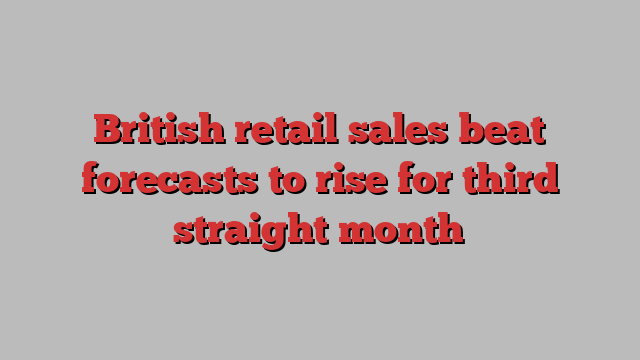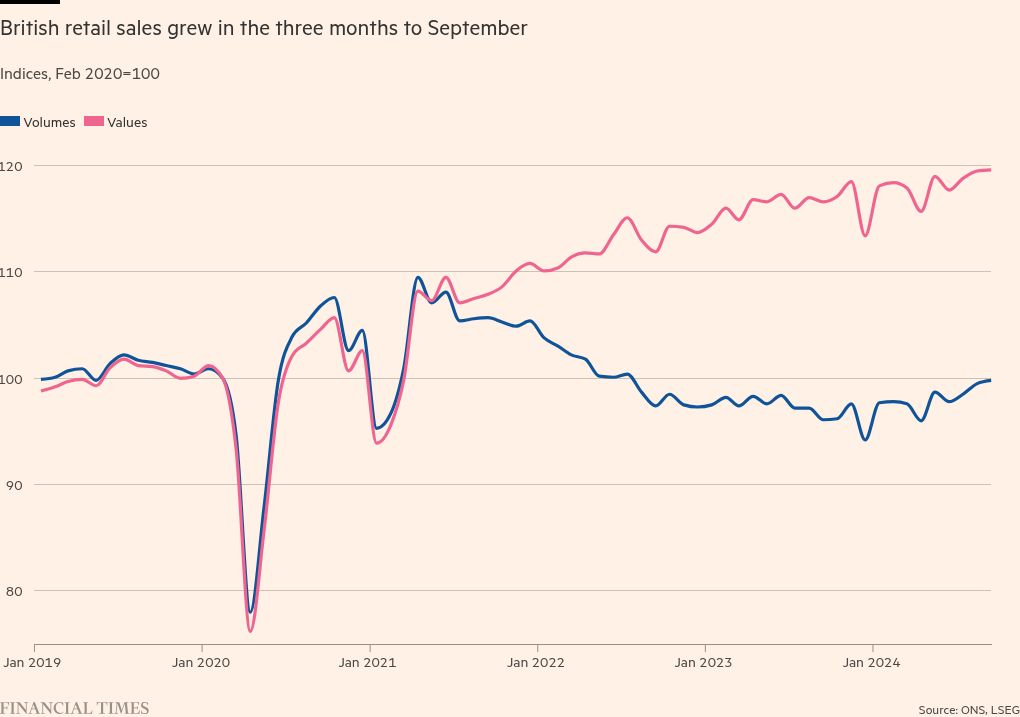
Unlock the Editor’s Digest for free
Roula Khalaf, Editor of the FT, selects her favourite stories in this weekly newsletter.
British retail sales grew unexpectedly for the third month in a row in September, increasing by 0.3 per cent, helped by purchases of the latest iPhone.
The Office for National Statistics figure for the quantity of goods bought in Great Britain between August and September was much stronger than the 0.3 per cent contraction forecast by economists polled by LSEG.
The data marked the highest sales volume since July 2022. Following the release, the pound strengthened against the dollar, up 0.4 per cent at $1.31. Yields on interest rate-sensitive two-year gilts rose 0.02 percentage points to 4.05 per cent.
While sales in tech stores grew strongly, these were partly offset by falling sales in supermarkets, the ONS said. Retailers attributed this to “bad weather and households continuing to cut back on luxury food items hit sales”, said Hannah Finselbach, a senior statistician at the ONS.
Asif Aziz, retail director at the mobile network operator EE, said: “We saw buoyancy in the tech sector, with a jump in smartphone sales driven by the launch of the new iPhone 16.”
Apple last month unveiled the artificial intelligence-focused device as well as a sleeker Apple Watch and new AirPods.
The figures suggest that waning consumer confidence in September, driven by concerns over expected tax rises in the October 30 Budget, is not feeding through to consumer spending.

Spending power has also been supported by cooling inflation, which last month fell below the Bank of England’s target for the first time since April 2021, to 1.7 per cent, according to data published on Wednesday.
The inflation figures boosted market expectations that the BoE would cut interest rates in November and December.
Data released on Tuesday showed that UK wage growth continued to outpace inflation in the three months to August.
Together, the figures will fuel hopes for increased spending in the last quarter of the year, which is retailers’ busiest period.
Bogdan Toma, partner at McKinsey & Company, said: “This third month of consecutive growth sets the holiday lights aglow and could offer hope as UK retail moves towards the peak trading period.”
In the three months to September, sales were up 1.9 per cent, which should marginally add to UK economic growth in the third quarter. GDP figures for the three months to September will be published in November.
However, compared with February 2020, before the pandemic, consumers bought 0.2 per cent fewer goods, even as they spent about 20 per cent more, reflecting the impact of elevated prices over the past three years.
Alex Kerr, economist at the consultancy Capital Economics, expects real incomes to continue to grow in the coming quarters, which should support “an acceleration in overall consumer spending growth”.
He warned that if taxes rise more than expected in the Budget, real household incomes and consumer spending growth may be a little softer. However, he added that “any adverse impact on consumer spending will likely be offset by higher government spending”.
Additional reporting by Rafe Uddin